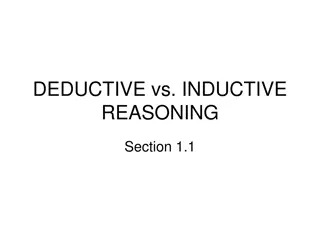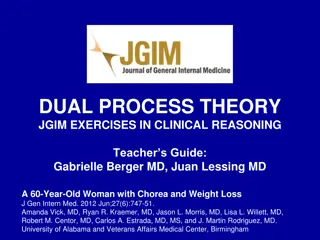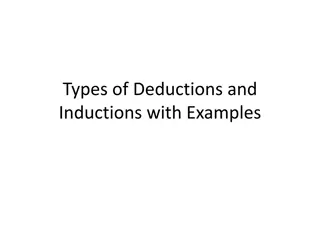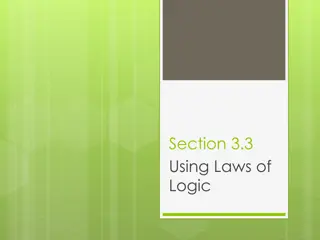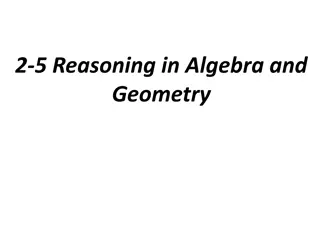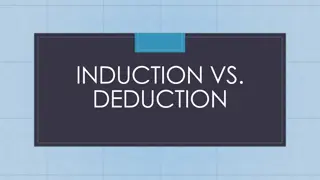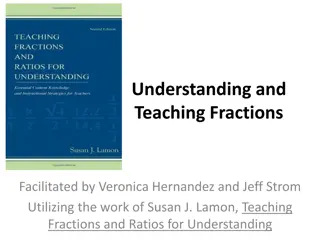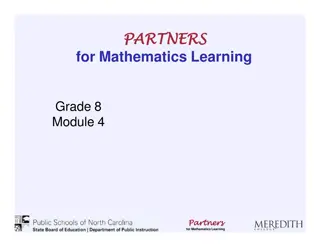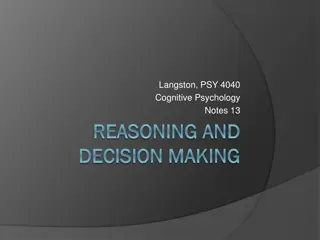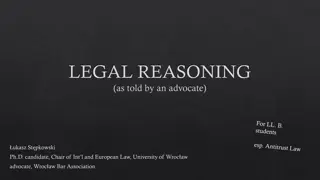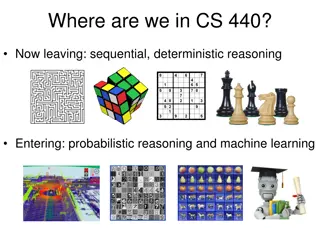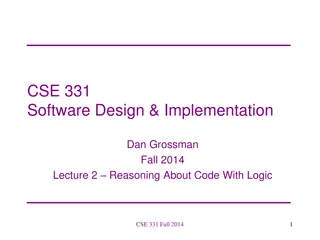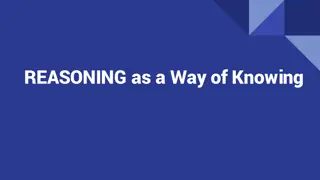Introduction to Code Reasoning in CSE331 Lecture
In this lecture, we delve into the fundamentals of code reasoning, focusing on forward and backward reasoning techniques in straight-line and if-statement code. The session includes reviewing the practice of identifying the strongest assertions and understanding the dual purposes of proving code correctness and comprehending its logic. Students engage in collaborative problem-solving, guided by TAs, to enhance their reasoning skills. Additionally, the lecture highlights the importance of reading lecture notes and examines Hoare triples as an extension of logical implications in programming.
Download Presentation

Please find below an Image/Link to download the presentation.
The content on the website is provided AS IS for your information and personal use only. It may not be sold, licensed, or shared on other websites without obtaining consent from the author. Download presentation by click this link. If you encounter any issues during the download, it is possible that the publisher has removed the file from their server.
E N D
Presentation Transcript
Section 1: Code Reasoning cse331-staff@cs.washington.edu
Todays Goals Review of code reasoning Practice forward and backward reasoning on straight-line and if-statement code Practice identifying the strongest assertion
Before we begin . . . = vs. == Read the lecture notes
Reasoning About Code Two purposes o Prove our code is correct o Understand why code is correct Forward reasoning: determine what follows from initial conditions Backward reasoning: determine sufficient conditions to obtain a certain result
Worksheet Problems 1 through 4 15 Minutes get as far as you can You can collaborate with other students Grab a TA if you feel stuck
Forward Reasoning {x >= 0, y >= 0} y = 16; {x >= 0, y = 16} x = x + y {x >= 16, y = 16} x = sqrt(x) {x >= 4, y = 16} y = y - x {x >= 4, y <= 12}
Forward Reasoning {true} if (x > 0) { abs = x } else { abs = -x } {abs = |x|} {x > 0} {x > 0, abs = x} {x <= 0} {x <= 0, abs = -x} {x > 0, abs = x OR x <= 0, abs = -x}
Backward Reasoning {x + 3b - 4 > 0} a = x + b; {a + 2b 4 > 0} c = 2b - 4 {a + c > 0} x = a + c {x > 0}
Backward Reasoning {y > 15 || (y <= 5 && y + z > 17)} if (y > 5) { x = y + 2 } else { x = y + z; } {y > 15} {x > 17} {y + z > 17} {x > 17} {x > 17}
Implication Hoare triples are just an extension of logical implication o Hoare triple: {P} S {Q} o P Q after statement S Everything implies true False implies everything P Q P Q T T T F T F T F T T F F
Weaker vs. Stronger If P1 P2, then o P1 is stronger than P2 o P2 is weaker than P1 Weaker statements are more general Stronger statements are more restrictive
Worksheet Problem 5
Worksheet I attend quiz sections. I attend quiz sections on Thursdays. y > 23 y >= 23 y = 23 y >= 23 y < 0.00023 y < 0.23 y is prime y <= 17
Worksheet I attend quiz sections. I attend quiz sections on Thursdays. y > 23 y >= 23 y = 23 y >= 23 y < 0.00023 y < 0.23 y is prime y <= 17
Worksheet I attend quiz sections. I attend quiz sections on Thursdays. y > 23 y >= 23 y = 23 y >= 23 y < 0.00023 y < 0.23 y is prime y <= 17
Worksheet I attend quiz sections. I attend quiz sections on Thursdays. y > 23 y >= 23 y = 23 y >= 23 y < 0.00023 y < 0.23 y is prime y <= 17
Worksheet I attend quiz sections. I attend quiz sections on Thursdays. y > 23 y >= 23 y = 23 y >= 23 y < 0.00023 y < 0.23 y is prime y <= 17
Worksheet I attend quiz sections. I attend quiz sections on Thursdays. y > 23 y >= 23 y = 23 y >= 23 y < 0.00023 y < 0.23 y is prime y <= 17 -- ?
Weakest Precondition The most lenient assumptions such that a postcondition will be satisfied If P* is the weakest precondition for {P} S {Q}, then P P* for all P that make the Hoare triple valid Notation: WP = wp(S, Q)
Weakest Precondition wp(x = y*y, x > 4)
Weakest Precondition wp(x = y*y, x > 4) |y| > 2
Weakest Precondition wp(x = y*y, x > 4) |y| > 2 wp(y = x+1;z = y-3, z = 10)
Weakest Precondition wp(x = y*y, x > 4) |y| > 2 wp(y = x+1;z = y-3, z = 10) wp(y = x+1, wp(z = y-3, z = 10)) wp(y = x+1, y-3 = 10) wp(y = x+1, y = 13) x = 12





